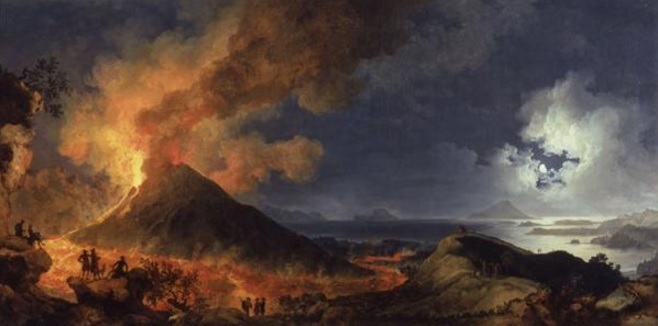Pompeii's Influence on 18th Century Art
Following the years after the discovery of Pompeii, more visitors flocked to Southern Italy to view the excavations in progress and to purchase antiquities and souvenirs. The German writer Goethe, who was among those somewhat initially disappointed with the mundaneness of what was found in Pompeii, nevertheless saw the importance of its discovery, writing in his journal: “Of all the catastrophes which have been visited upon the world, few have bequeathed such enormous benefit to future generations.”1 From Hubert Robert to Giovanni Battista Piranesi to Germaine de Stael, artists and writers were greatly inspired by the objects and ruins of Pompeii and Herculaneum.2 The thirst for more knowledge on Pompeii grew rapidly after news that “La Cività” was being excavated, and not only were paintings replicated in books and drawings, but the eruption of Vesuvius became a recurring theme in painting throughout Europe. In both France and England, the neo-classical style, which developed after the discoveries of Pompeii and Herculaneum, took hold in the later part of the eighteenth century, and paintings by artists such as Joseph Wright of Derby and Pierre-Jacques Volaire showed contemporary renditions of the eighteenth century imagination of the classical world, brought to life by the discovery of the two ordinary Roman towns of Pompeii and Herculaneum, which were forever preserved by the very force that destroyed them.
SV
____________
1. Goethe in Lessing, Pompeii, 28.
2. Lessing, Pompeii, 1-28.
3. “An Eruption of Vesuvius by Moonlight.” Compton Verney Art Gallery & Park. Accessed April 2017. http://www.comptonverney.org.uk/cv_collections/an-eruption-of-vesuvius-by-moonlight/.
